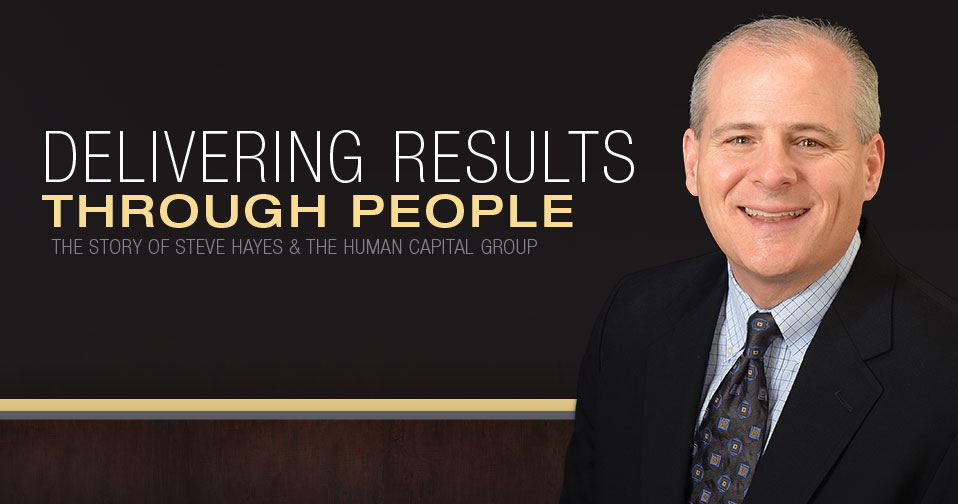Communication Helps Businesses Function

Do you ever get tired of hearing the same advice? (Like: the best way to manage your weight is through moderate exercise, drinking lots of water, and eating healthily.) You may get irritated when you hear it, saying to yourself, “Yeah, I know, I know.” And maybe you wish there were a different, easier answer. But you also know that the principle is foundationally true. In fact, the reason the advice is repeated is because it’s true, and it works. The same dynamic applies to good communication in the workplace. We hear the advice repeatedly from different sources:
- “You can have brilliant ideas, but if you can’t get them across, your ideas won’t get you anywhere.”
- Lee Iacocca
- “Developing excellent communication skills is absolutely essential to effective leadership. The leader must be able to share knowledge and ideas to transmit a sense of urgency and enthusiasm to others. If a leader can’t get a message across clearly and motivate others to act on it, then having a message doesn’t even matter.”
- Gilbert Amelio
- “To effectively communicate, we must realize that we are all different in the way we perceive the world and use this understanding as a guide to our communication with others.”
- Tony Robbins
- “Good leaders must communicate vision clearly, creatively, and continually.”
- John Maxwell
Why do so many leaders, speakers, authors and consultants talk (seemingly incessantly) about communication? Because if you don’t communicate clearly (that is, accurately transfer the message in your mind to someone else’s mind), then at a very basic level, either you are going to wind up doing everything by yourself, or those things that are done by others don’t get done correctly. Is that an effective way to lead an organization?
Good Communication Leads to Positive Results
The fact is: Good communication lies at the heart of reaching your goals. When team members communicate well–that is, when they interact often, listen to others, and work at communicating clearly–good things happen in a business or organization. There are fewer errors made (“Oh, I thought you said …”), better decisions are made (and implemented!), roles and responsibilities are more clear, and there is less irritation and conflict between the staff. Recently, I was reading through the book of Genesis, and I came upon the story of the Tower of Babel, where God makes people talk in different languages. Why? Because (and I don’t fully understand the theology of this), God says, “These people are united, all speaking the same language. This is only the beginning of what they will do. They will be able to do anything they want.” (Genesis 11: 6). When people communicate well, they can accomplish great things together. There is a synergy and flow that occurs that allows people to be themselves, to feel energized, and for creative problem-solving to occur.
Poor Communication Leads to an Unhealthy Environment
The converse premise is also true: an organization becomes unhealthy when different types of poor communication dominate the interactions. My colleagues and I have been studying toxic work environments for the past several months for our new book. To no one’s surprise, one of the top characteristics of a toxic work environment is a pattern of poor communication across the organization – from management to employees, between supervisors and team members, with vendors and even with customers.
Let’s specify some of the different variations of ineffective communication:
- 1. No communication.
This is no surprise. When people don’t communicate with one another, necessary information isn’t transferred, which results in individuals making (usually incorrect) assumptions, or making bad decisions based on lack of information, or being afraid to make decisions, because they don’t have the information they need.
- 2. Indirect communication.
Talking through someone else (“Well, you tell Bill…”), going around the proper channels of communication, or not talking to the person who really should know (hoping they may eventually “get the message”) is one of the most effective ways to screw up an organization.
- 3. Gossip.
A subvariety of indirect communication, gossip is the process of telling others negative information about another person, which they have no need or right to know. The purpose is character assassination, and gossip is a deadly poison in office relationships.
- 4. Negativity & complaining.
Some people are experts in making negative, disparaging remarks about any event or circumstance. Complaining comes from a lack of gratitude and contentment–nothing is ever good enough. Employ enough of these individuals, and soon everyone will hate their work and their co-workers.
- 5. Blaming, making excuses.
Originating in childhood, blaming and making excuses are rooted in an individual being unwilling to accept responsibility for their actions and choices (which is why these people seem childish). Unfortunately, these forms of communication can go all the way up the organizational chart and are even used by departments and divisions to avoid being held accountable for the results they are experiencing.
- 6. Anger, sarcasm and cutting remarks.
Negativity is one thing, but actively attacking others through anger and damaging words is totally unacceptable. Unfortunately, however, many leaders manage and manipulate their staff through verbal and emotional abuse. The result? Wounded individuals who function primarily out of fear, trying not to get hurt (and therefore, unwilling to take any risks at all).
The Solution? Speaking The Truth In Love
As often is the case, the Bible gives us solid, practical instruction in how to communicate well with others. There are many, many verses addressing the issue (for example, read through Proverbs), but an excellent starting point is Ephesians 4:15, where we are encouraged to relate to one another by “speaking the truth in love.”
What I find interesting is the variety of ways in which we do not follow this instruction.
First, we are to “speak,” as opposed to not saying anything. Some of us don’t want to “make waves” and some of us actively avoid anything that looks like conflict. But this isn’t healthy–for us, or for the other person. Additionally, we are to speak to one another (this is implied in the passage) as opposed to talking around or through others. Some of us are unwilling to talk directly to the person we need to, but are “courageous” enough to try to send the message through somebody else. Indirect communication has a number of faults, but two of the most problematic are: a) the messenger takes the bullet of emotionality from the sender–they are the ones who get yelled at (not the true recipient of the message); and b) there is no process available for the recipient to obtain clarification on the message or to respond directly to the sender.
Secondly, we are to speak “the truth,” as opposed to saying false things. Lack of truth comes in many forms–through withholding information (ever know someone who consistently didn’t tell you the whole story?), by distorting information (putting a spin on the information so that the message received does not accurately reflect the reality), or by out-and-out lying. As Jim Collins stated in Good to Great, if we are going to be successful in business, we must “face the brutal facts of reality.” But in order to do so, then we need to know the true facts.
Finally, we are to speak the truth “in love,” as opposed to speaking in anger, judgment or condescension. While the Southern regions in our country are more likely to err by not saying anything or talking indirectly through others, our Midwest and Northern friends are more likely to “tell you like it is” and not worry too much about their tone or whether you get your feelings hurt. Both are errors. We can speak truth with one another, even difficult truths, without attacking, yelling or being excessively harsh. Some of us need lessons in communicating more gently. For if we are to speak the truth in love, doesn’t that imply we should be careful to not communicate in a sharp, cutting manner? An additional point about speaking “in love”: I think it also means we should not communicate the truth to others in fear, through resentment or jealousy, or hurt. These motivations will not lead to a positive result.
"We can speak truth with one another, even difficult truths, without attacking, yelling or being excessively harsh. Some of us need lessons in communicating more gently."Dr. Paul White
Yes, you’ve heard it before, but it is worth saying again: Working on improving your communication patterns at work will create positive results throughout your organization.

By: Dr. Paul White
Dr. Paul White is a psychologist, speaker, and consultant who makes work relationships work. Co-author of the 5 Languages of Appreciation in the Workplace (with Dr. Gary Chapman), Dr. White provides practical advice in improving workplace relationships and successfully transferring family businesses across generations.
Read More Articles by Dr. Paul White





